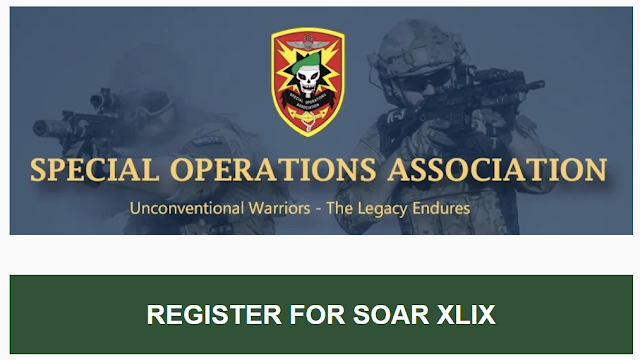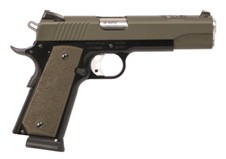Bán đảo Sơn-trà gần thị-xã Đà-nẵng,
thuộc tỉnh Quảng-nam đã từng là căn-cứ bí-mật huấn-luyện người nhái
dùng để xâm nhập miền Bắc trong những công-tác khuấy-rối
và phá-hoại. Đó là những chiến-sĩ can cường cùa NKT/QLVNCH.
Sơn-trà,
Ðà-nẵng bây giờ không còn dấu tích hồi đầu, khi SPVDH (sở phòng-vệ
duyên-hải) mới thành lập, do đó có bạn biết, có bạn nhập-ngũ sau này
thì không
biết một chút nào. Vậy bài này để các bạn hình dung quang cảnh ngày xa
xưa đó, và cũng để chúng ta ôn nhớ lại những kỷ-niệm một thời của thưở thanh-niên, chúng ta đã đóng góp mồ hôi và nước mắt cho cuộc chiến,
người còn kẻ mất, nhiều chiến-hữu đảm trách những
công-tác bí-mật chết trong âm thầm, dường như đã đi vào quên lãng.
Chúng ta may mắn, được vui vầy bên gia-đình yên ấm, nhắc tới họ, thắp
nén hương lòng ghi nhớ công ơn Họ là những anh-hùng không tên tuổi (Thế
Lữ)
Là
một quân-nhân đã phục-vụ trong NKT từ 1961-1975. Ở đây, tôi ghi nhận
những gì tôi thấy hoặc tham gia trên thực-tế. Năm 1963 tôi nhận nhiệm-vụ
ra công-tác
tại bán đảo Sơn-trà, Ðà-Nẵng. Chính nơi đây, những nhân-viên phòng E
hay gọi là phòng 45 đang thi-hành công-tác bí-mật, họ có thể không biết
nhau hoặc có thể biết nhau, gặp nhau hàng ngày, nhưng anh ta đang làm gì
? thì chỉ người đó biết mà thôi. Ðó là cung
cách làm việc của những người quanh tôi ngày đó.
Bước
xuống phi-trường Ðà-nẵng vào tháng 6-63, phi-trường không cách thị-xã
bao xa, thành-phố không lớn lắm, dân chúng thưa thớt, con đường Ðộc-lập
dài vắt ngang
phố, tôi nhớ nhất là con đường Trần nhật Duật, nơi đây là những căn nhà
an-toàn thuê của dân, để dưỡng quân và cũng từ nơi này là nơi hẹn hò,
phân-phối công-tác riêng biệt cho từng cá-nhân.
Ðứng
từ Bến cá làm chuẩn, nhìn sang bên kia là bán đảo Tiên-sa, Sơn-trà.
Nhìn sang tay trái là những hòn núi mờ mờ nhấp nhô (lúc đó chưa có đài
kiểm-báo của
KQ) dưới chân núi là cái vịnh nhỏ, có những thuyền buồm kiểu miền Bắc,
dài khoảng 22 mét, có gắn động-cơ mạnh để ứng phó với hoàn-cảnh phải
giao-chiến với tầu cộng sản Bắc việt, ngoài ra còn trang-bị súng
đại-liên 50 và máy truyền-tin. Những thuyền này được
mang mã-số N1...đến N7. Những tài-công là những ông già, người miền xứ
Nghệ, tiếng nói nặng chệt. Ngoài ra còn có chiến-đĩnh Swift và Nasty.
Sau này vì cường-độ chiến-tranh gia tăng, Hoa-kỳ đã trang-bị cho chúng
ta những giang-tốc-đĩnh PTF vừa nhanh, hoả-lực
mạnh, có trang-bị radar rất tối-tân.
Người
dân Ðà-nẵng muốn qua Sơn-trà phải đi qua cầu Trịnh minh Thế. Còn chúng
tôi chỉ dơ tay vẫy, tức thời có ca-nô sang đón và có xe túc-trực chở
đến trại Pacific,
còn gọi là trại Mỹ-khê cách Bến cá khoảng 3 cây-số. Ðây là căn-cứ chính
của SPVDH, trại lớn nhất ở Mỹ-khê, kế tiếp là những trại nhỏ dọc theo
bờ biển chạy dài về phía Ngũ hoành sơn, một trong những trại nhỏ này có
hồ bơi, để thử tài lặn của từng người, nói
tới Sơn-trà chúng ta phải nhắc tớì những rừng phi lao chạy dài dọc theo
bãi biển. Chính nơi đây là nơi huấn-luyện người nhái, hết toán này đến
toán khác và hoàn toàn do người Mỹ đảm nhiệm, họ được tập-luyện bơi lội,
xử-dụng bình scuba, vượt sóng bằng xuồng
cao- su, cách đối phó khi xuồng bị lật úp v..v..
Người
chỉ-huy đầu-tiên SPVDH là cố đ/tá Bình, tức đ/tá Ngô thế Linh, trụ-sở
tại 26 đường Bạch-đằng, Ðà-nẵng. Ông là vị sĩ-quan lâu đời nhất của NKT,
ông rất thân mật với thuộc cấp, và có nghiệp-vụ cao trong
ngành tình- báo, ông được thuộc-cấp kính-trọng và phục tùng (một việc
đáng được đề cao là ông tìm đến thăm hỏi thuộc-cấp khi nghe tin họ đặt
chân đến Hoa-Kỳ) Chính nơi đây sản sinh ra những Kinh Kha chưa bao giờ
chịu khuất-phục CS như : Ðặng chí Bình, Lầu
chí Chăng, Nguyễn văn Tâm v..v..
Trở
lại chuyến đi công-tác của chúng tôi với toán Centaur. Thường thường
những toán từ 6 người đến 12 người, nhưng toán Centaur có tới 33 người,
họ đã được học
căn-bản tác-chiến, học cách phá-hoại cầu, và vừa thực-tập chuyến nhẩy
dù đêm không có bãi đáp với quần áo bảo-hộ tại rừng già Ban-mê-Thuột.
Hôm nay chúng tôi lên phi-cơ C-123 tại phi-trường Long-thành, tỉnh
Biên-hoà lúc 10:30 sáng, trực chỉ Ðà-nẵng, đây là
toán ngắn hạn, mục-tiêu của họ là những chiếc cầu sắt do người Pháp để lại. Họ sẽ nhẩy dù xuống, tiến tới mục-tiêu, phá-hủy cầu rồi rút ra
biển, nơi đó sẽ có tầu Mỹ đến đón. Khoá huấn-luyện người nhái này kéo
dài một tháng rưỡi, và tối nay, mãn khoá họ sẽ
thực-tập phối-hợp nhẩy dù xuống bãi biển Mỹ-khê, phá-hoại cây cầu được
dựng lên làm mục-tiêu và rồi rút ra biển, chương-trình tổng-quát là như
vậy.
Chiều
hôm đó, khoảng 6:30 tối, chúng tôi 3 người: một trung-sĩ cố-vấn,
trung-sĩ nhất Ðèo văn Peng và tôi có
mặt tại phi-trường Ðà-nẵng cùng với khoá-sinh biệt-kích đang bận rộn
mặc dù và những trang-bị nặng-nề nào ba-lô, đầu bò truyền-tin và
đặc-biệt phải mang phao để lỡ có rớt xuống biển cho được an-toàn... Trời
chiều hơi lạnh, nhưng người nào mồ hôi cũng đổ ra
từng giọt. Chúng tôi đang khám dù thì từ xa một chiếc xe jeep chạy tới,
tôi nhận ra viên đ/úy cố-vấn, ông chỉ vào máy đo gió và nói: gió mạnh
sẽ thổi hết ra biển và yêu-cầu tôi di-chuyển điểm đánh dấu đến nơi khác,
tôi lên xe về Mỹ-khê nơi đánh dấu bãi nhẩy
và di-chuyển chữ T vào sâu hơn.
Theo
chương-trình thì khoảng 9:30 máy bay đến, chúng tôi chờ đến 10:30 máy
bay cũng chưa tới. Ðến 11 giờ thì mọi người đã có vẻ xôn xao, bên VN hỏi
bên Mỹ và
ngược lại phía Mỹ hỏi VN cũng cùng câu hỏi ? máy bay cất cánh rồi đi
đâu ? có thể máy bay gặp nạn hay bị không-tặc ? Cho đến sau đó 3 ngày,
khi tôi đang đi trên phố với bộ đồ dân-sự, sửa-soạn về Sàgòn thì một
chiếc xe jeep chận tôi lại, đó là đ/tá Dư quốc
Lương trưởng phòng không-yểm NKT, ông cho biết, nhân-chứng thấy máy bay
đâm vào dẫy núi phía Bắc Sơn-trà. Ông chở thẳng tôi ra phi-trường và
cùng tôi lên chiếc Cessna U-17 do chính ông lái. Bay tới vòng thứ ba thì
tôi nhìn thấy đuôi máy bay, lúc này mây vẫn
phủ trắng xoá. Sau đó tôi được chở về bãi Bắc của bán đảo Sơn-trà, nơi
đây có một trung-đội nghĩa
quân tăng-phái cho tôi đi lấy xác, tôi chẳng kịp thay quần áo...Mất 3
tiếng chúng tôi mới lên tới chỗ máy bay gặp nạn. Một cảnh tan hoang, máy
bay cháy hết chỉ
còn cái đuôi, giở bản đồ ra, thấy núi này cao hơn 500 mét, nơi máy bay
đụng ở độ cao hơn 400 mét. Trước khi máy bay đụng vách đá, chong chóng
phi-cơ đã quạt đứt rừng cây dài một cây số như luống cầy máy chạy dài,
chiếc phi-cơ muốn vượt thoát lên không trung
nhưng đã muộn, máy bay đụng phải tảng đá cao khoảng 6 mét, cho nên mọi
thứ : người, mũ nhẩy, súng ống bị cản lại một đống ở chân tảng đá. Tất
cả không còn nguyên vẹn, bước vào đuôi máy bay, xác một nhân-viên phi
hành đoàn với bộ áo phi-hành mầu cam bị cháy
nham nhở nhưng mặt mũi tóc tai vẫn bình thường, anh ta nằm ngửa, hai
tay trải rộng, bên cạnh là cái headset với sợi dây điện mầu đen. Móc
trong túi quần, trong chiếc ví có thẻ chủ quyền chiếc xe Vespa và thẻ
sĩ-quan đ/úy Hồ văn Kiệt. Ði bọc ra sau tảng đá
ngước nhìn lên trời, thấy trung-sĩ nhất Ðèo văn Peng ngồi, hai chân
thòng xuống đất sau lưng vẫn đeo dù, đầu trần, mặt cúi phía trước, giữa
trán bị chẻ một miếng như dao chém, nhưng không có máu, nhìn vào mặt
không một vết bầm, nom rất hiền từ và tự tại, với
thế ngồi như vậy, chỉ cần một cơn gió mạnh là anh sẽ rớt ngay mà thôi.
Tổng-số người chết là 41 gồm 33 BKQ+6 phi-hành đoàn+1 huấn-luyện viên
nhẩy dù+1 cố-vấn Mỹ, tất cả không ai toàn xác, chỉ có hai người còn
nguyên vẹn là Kiệt và Peng. Riêng viên cố-vấn chỉ
còn cánh tay xâm với ngón tay có đeo nhẫn. Túi đựng xác đã viết sẵn
tên, cứ thế mỗi bao xác chia đều, không còn cách nào hơn nữa..!!! Chuyện
xẩy ra cách đây gần 40 năm, nhưng tôi vẫn cảm thấy như nó xẩy ra vài
hôm trước đây. Cảnh tan hoang, tàn phá, khói lửa
nghi ngút trên vách núi dựng đứng của ngọn núi Sơn-Trà, tôi phải ôm gốc
cây, chui vào bao đựng xác mà ngủ vì trời đêm quá lạnh. Cho đến bây
giờ, ngồi một mình suy nghĩ về tai-nạn này, tôi vẫn không hiểu vì sao mà
tr/sĩ Ðèo văn Peng khi máy bay đụng mạnh vào
sườn núi, anh bị văng ra, bay bổng lên trời, làm cách nào mà anh có thể
chết ngồi trong vị-thế đó được ? Về phần tôi, càng nghĩ, càng thấy sợ,
công việc mình đang đảm trách, đối-diện thần chết trong tích tắc mà
không biết, tự hỏi nếu không có viên đ/úy cố-vấn
đến đưa đi lúc đó thì…Cám ơn Thượng-đế, ông bà đã phù hộ cho tôi tai
qua nạn khỏi để viết bài này.
Ðây
là câu chuyện đã giữ bí-mật suốt mấy chục năm qua, cần bạch hoá để thân
nhân của toán Centaur và phi-hành đoàn chuyến bay đó biết rõ về cái
chết của thân
nhân mình, và cũng để nói lên sự đóng góp của họ cho NKT nói riêng, cho
đất nước nói chung, chưa một lần được nhắc đến để vinh-danh...
Khi
viết bài này, tôi chạnh lòng nhớ tới cố đ/tá Ngô thế Linh và t/tá Trần
kim Khánh cũng có mặt tại bãi nhẩy Mỹ-Khê để theo dõi cuộc thực tập đêm
hôm đó, th/tá
Khánh hiện ngụ tại Nam Cali, đ/tá Ngô thế Linh đã ra người thiên-cổ.
Ông ra đi quá vội để lại sự thương nhớ cho mọi người. Người chỉ-huy
trưởng phòng E 45.
Nam Cal. Thanksgiving day
Nguyễn mạnh Hùng





























